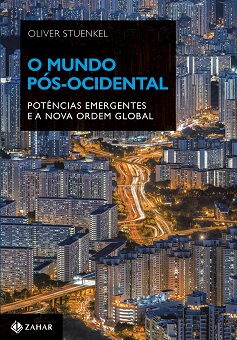
US President Eisenhower greets the crowds in São Paulo (1960). Along with his Argentine counterpart Frodizi, Brazil’s President Juscelino Kubitschek sought to convince Eisenhower to provide large-scale development aid.
—–
Book review: Latin America confronts the United States. Asymmetry and Influence. By Tom Long. Cambridge University Press, 2015. 274 pages, U$64.14 (kindle, amazon.com)
The history of US-Latin American relations is, above all, shaped by the vast power asymmetry between the two, US-American dominance over its weaker neighbors in the South and attempts by Latin American leaders to reduce the influence of the “Colossus of the North”. Indeed, in International Relations theory, large states are seen as decisive, while small and weak states are vulnerable and usually enjoy only very limited autonomy. Most traditional analyses of the topic – ranging from Eduardo Galeano’s famous “The Open Veins of Latin America” and Lars Schoultz’s “Beneath the United States” to Moniz Bandeira’s work use this framework and generally identify attempts by the United States to dominate or weaken Latin America, identifying the latter as an object or victim.
In a highly readable book on the subject, Tom Long questions this traditional approach, examining how Latin American leaders have been able to overcome power asymmetries to influence US foreign policy. Latin America confronts the United States explores a series of moments in post–World War II inter-American relations – foreign economic policy before the Alliance for Progress, the negotiation of the Panama Canal Treaties, the NAFTA agreement, and the growth of counter narcotics in Plan Colombia – to show how Latin American leaders influenced Washington’s behavior.
Aside from providing detailed and engaging historical accounts of the cases above, Long makes some interesting points vis-à-vis the dynamics shaping asymmetrical relations between great powers and weaker ones, arguing that Latin America has exercised more influence in US-Latin America relations that is normally understood.
Long’s first case describes Juscelino Kubitschek’s efforts to rally the region to obtain more development aid from the United States – a remarkable and often overlooked example of regional cooperation at a time when ties between Brazil and its neighbors were still incipient (it took another three decades before Brazil’s President Figueiredo would become the country’s first head of state to visit Colombia and Peru). Long says that while Latin American attempts to convince Eisenhower to finance a new ‘Marshall Plan’ failed, they set the stage for Kennedy’s Alliance for Progress.
The second case, perhaps the book’s most remarkable, explains how Omar Torrijos, dictator of one of the hemisphere’s smallest countries, shrewdly used postcolonial rhetoric and international institutions to convince the United States to hand over control of the Panama Canal, something US foreign policy makers were strongly opposed to at first. Comparing Torrijos’s goals in 1972 with the final treaty, it becomes evident that Panama attained most of its objectives, Long writes. Most importantly, the treaties eliminated “perpetuity.” Panama began seeking a full transfer of the canal by 1995. After more than five years of negotiations, Panama’s fallback position of 2000 was accepted – a remarkable concession from the 1972 US goal of perpetual defense rights, or a ninety-year extension. Rejecting traditional historical accounts which point to Carter’s arrival as the transformative event in the negotiations, Long argues “that the treaties figured so high on Carter’s agenda was a testament to a long Panamanian struggle to put them there.” The case sheds particular light on the ways in which weaker-state leaders can use international institutions in pursuit of their objectives, as well as the role weaker states can play in affecting the political agendas of larger ones.
The third case describes the conclusion of the NAFTA trade agreement and Mexico’s role in it. Just as in the previous cases, Long believes the standard narrative is flawed and exaggerates US agency and leadership. The author’s final case study assesses the Plan Colombia, illustrating that Pastrana’s government had considerable influence in the creation and shape of the historic undertaking. He thus contradicts common claims which regard Plan Colombia as a Washington-led initiative or as a symbol of US imperialism. Indeed, the book includes a particularly interesting description of how Colombian diplomacy sought to influence decision-makers in Washington. This part will be useful to policy makers from Brazil and other Latin American countries, whose capacity to engage US Congress is often quite limited.
The author concedes that, of course, power asymmetry remains the defining element of US-Latin America relations. Still, the book provides a fresh look at a discussion that is often dominated by Latin American worries about US intervention, with little attention paid for ways for Latin America to exercise influence in the United States. Other recent books, such as Matias Spektor’s Kissinger e o Brasil, have questioned the traditional framework used to understand US-Latin American relations, weakening the claim that Latin American countries have been powerless victims in the face of US policies throughout history. Long’s book thus provides an important analysis for Latin American scholars, but also to those studying regional dynamics elsewhere, for example in Asia, where China’s growing influence is ever more important topic.
While its focus is clearly historic, the book provides some interesting insights for policy makers from smaller countries that seek to enhance their autonomy vis-à-vis a greater neighbor – be it in Europe, Asia, Africa of the Western Hemisphere. Describing what he considers to be the best strategy to influence Washington, Long writes
The weaker state inhabits a tenuous position where it is perceived by U.S. policymakers as a friendly country, but one that merits attention in order to maintain its cooperation. A slavishly pro-U.S. country might receive little attention and few resources. One that strays too far could attract the wrong kind of attention. These boundaries fluctuate and are not always easily discernable.
Equally important, he argues
The ability to exercise influence on U.S. policy will often depend on the ability to win international allies and to work with other small and medium states, which I refer to as collective foreign policy power. In situations where the U.S. government rebuffs or ignores an initial weaker-state demand, international allies will play a more significant role.
Successfully engaging and influencing the United States will be crucial for Latin America in the coming years — be it vis-à-vis designing policies to combat drug trafficking and organized crime, fighting corruption, or articulating a regional response to deal with China’s growing influence. Latin America Confronts the United States offers a very interesting look back about how Latin America has been able to influence its dominant neighbor in the North.
Read also:
How Brazil’s Crisis Is Bleeding into the Rest of South America (Americas Quarterly)
US Military Bases, Quasi-bases, and Domestic Politics in Latin America
Brazil and Argentina must prepare joint plan as Venezuelan debt default looms
Photo credit: AP Photo









